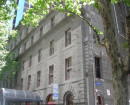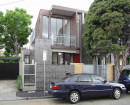Yarraville Residential Heritage Area
Somerville Rd, Melbourne to Geelong railway, Avoca, Castlemaine, Woods, Willis, Simpson, Ballarat, Blackwood, Norfolk, Sussex, Stephen, Ducker, Goulburn, Lennox, Maggie, Ovens, Schild, Tarrengower, Wilson and Knox Streets YARRAVILLE, MARIBYRNONG CITY
-
Add to tour
You must log in to do that.
-
Share
-
Shortlist place
You must log in to do that.
- Download report
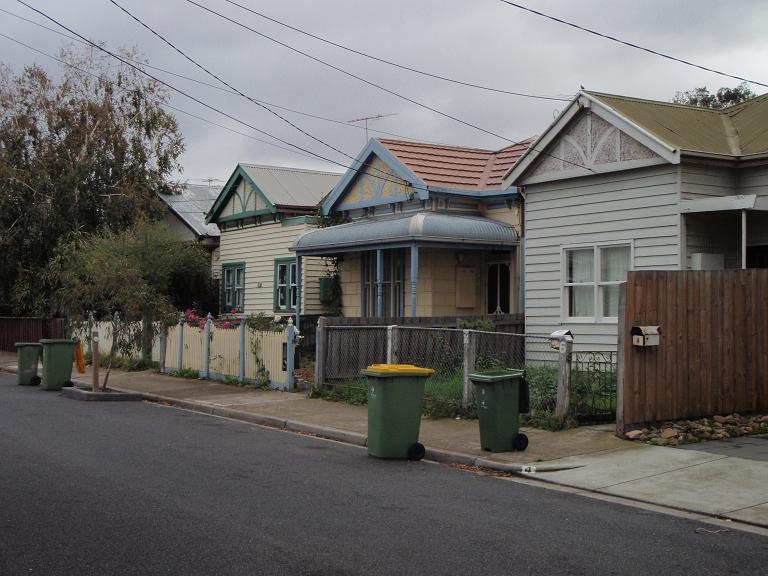

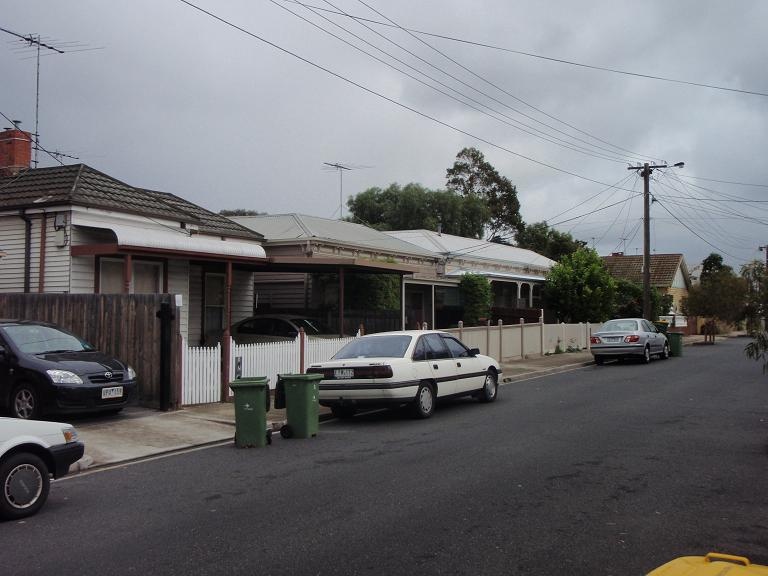
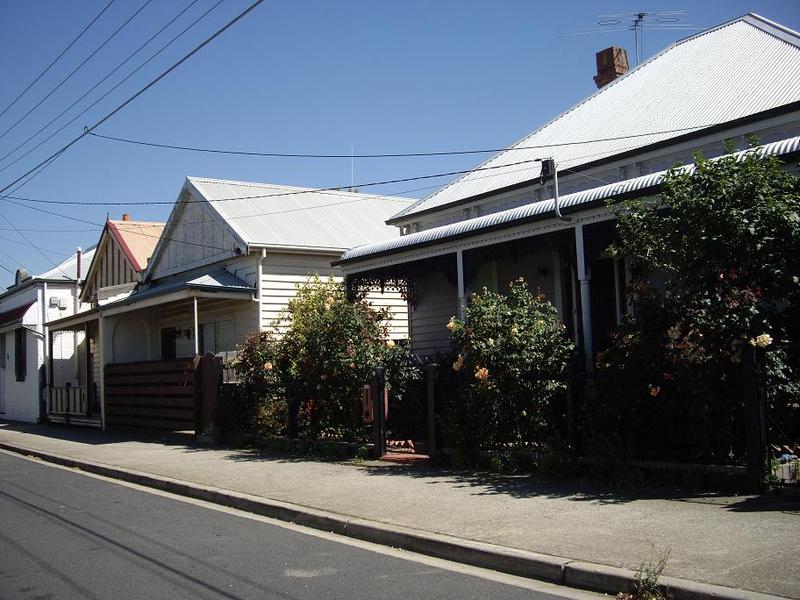
Statement of Significance
Statement of Significance
The Yarraville Residential Precinct is significant to the City of Maribyrnong because:
- it (with the Yarraville Commercial & Civic precinct) is expressive of two major development periods in the City's history (Victorian-era, Edwardian-era), with all of the elements which make up an urban area from these periods, such as the transport hub and associated entertainment, civic and commercial buildings close to the station, and the surrounding residential areas which still express the dominant Edwardian and Victorian-eras, as expressed by:
- small Victorian & Edwardian single-storey detached housing with mainly weatherboard and some brick wall cladding, corrugated iron roofing, front verandahs, similar front and side setbacks and narrow block frontages,
- some surviving early asphalt footpaths and stone kerb and channel,
- pre motor-car age indicated by no provision originally for on-site vehicle parking for most of the identified housing,
-major built form of the typical Victorian era hipped roof and Edwardian era main hip and projecting gable roof form combination,
- some early two storey masonry parapeted, zero lot line, corner-sited commercial development at prominent locations in the streetscape,
- mature elm street tree planting typical of the Victorian-era (Criteria A3, A4);
- of the early underlying street, subdivision pattern and street names (1859 plan of Yarraville Township) which derive from one of the early private town surveys in the Colony of Victoria and the oldest known private township plan to be created and sold within the City ( Criterion A4); and
- it contains elements of the earlier phase of Yarraville's commercial development which occupied prominent street corners (Criterion A4).
Australian Heritage Commission (AHC) criteria
The Australian Heritage Commission criteria consist of a set of eight criteria which cover social, aesthetic, scientific, and historic values. Each criterion has sub-criteria written specifically for cultural or natural values. The relevant criteria are:
A.3 richness and diversity of cultural features
A.4 demonstrates well the course and pattern of history, important historic events
-
-
Yarraville Residential Heritage Area - Physical Description 1
The general character of the Yarraville Residential Precinct is that of small Victorian & Edwardian single-storey detached housing with mainly weatherboard and some brick wall cladding, corrugated iron roofing, front verandahs, similar front and side setbacks and narrow block frontages. Houses were originally with timber picket front fences and streets with asphalt footpaths and stone kerb and channel, with some surviving. Originally there was no provision for on-site vehicle parking for most of the identified housing. The major built form is of the typical Victorian era hipped roof and Edwardian era main hip and projecting gable roof form combination although there are some early two storey masonry parapeted houses. The corner-sited commercial development, had zero lot lines. Properties are generally surviving in the grid lot layout from the 1859 township layout as shown in the `Township of Yarraville' plan and there is mature elm street tree planting typical of the Victorian-era. Of the 507 places in the precinct as a whole 429 are contributory.
In the residential areas there are concentrations of 19th century housing which survives in Ovens Street (north side), Stephen (north end) and Castlemaine Street (west end). Edwardian groups are in Sussex, Knox and part of Stephen (north) Streets. Later eras are represented in a lesser concentration in Frederick Street. Some areas, such as Stephen Street have elements of an early commercial- civic core (former Lyric Theatre) which has been superseded by the present centre grouped around the railway. Most houses are altered in detail but retain enough original fabric to express their development period better than most in the City. This is aided by rare (in the City of Maribyrnong) mature public landscape (elms, street trees) in Stephen St, south of Somerville Road. Very little of the bluestone kerb and channel which was once prevalent in the precinct has remained except for the east end of Blackwood and Lennox Streets and the large and notable expanse of basalt pitchers on the railway yard next to Woods St.
Part of the 1859 township plan lies outside of the heritage overlay area where the existing building stock has been judged to be below the study threshold for adequate expression of the historical themes and satisfaction of the Australian Heritage Commission criteria. However the township plan itself is of significance as evoked by the street and subdivision pattern and street names which survive from its creation date.Yarraville Residential Heritage Area - Physical Conditions
Physical Conditions:fair (disturbed, reasonably preserved)
Yarraville Residential Heritage Area - Integrity
Integrity:partially intact/intrusions
Yarraville Residential Heritage Area - Historical Australian Themes
Thematic context
Australian Principal Theme Making suburbs
PAHT Subtheme Making suburbs
Local Theme(s) Private subdivisions and villages in the nineteenth centuryYarraville Residential Heritage Area - Physical Description 2
Map (Melway) 42 AB89
Boundary description Parts Somerville Rd, Melbourne to Geelong railway, Avoca St, Woods, Willis, Simpson, Ballarat, Norfolk, Sussex, Stephen, Ducker, and Knox Streets, with emphasis on all original Edwardian-era and Victorian-era elements, including basalt pitched paving, asphalt footpaths, lot sizes and street patterns.
Heritage Significance City
Creation date(s) 1849-
Local Government Area City of Maribyrnong
Ownership Type Private & PublicHeritage Study and Grading
Maribyrnong - Maribyrnong Heritage Review
Author: Jill Barnard, Graeme Butler, Francine Gilfedder & Gary Vines
Year: 2000
Grading:
-
-
-
-
-
SUN THEATRE
 Victorian Heritage Register H0679
Victorian Heritage Register H0679 -
STATE SAVINGS BANK
 Victorian Heritage Register H0723
Victorian Heritage Register H0723 -
CSR COMPLEX
 Victorian Heritage Register H1311
Victorian Heritage Register H1311
-
Archaeological site
 Southern Grampians Shire
Southern Grampians Shire -
Avoca
 Stonnington City H0809
Stonnington City H0809 -
BANYULE
 Victorian Heritage Register H0926
Victorian Heritage Register H0926
-
-






